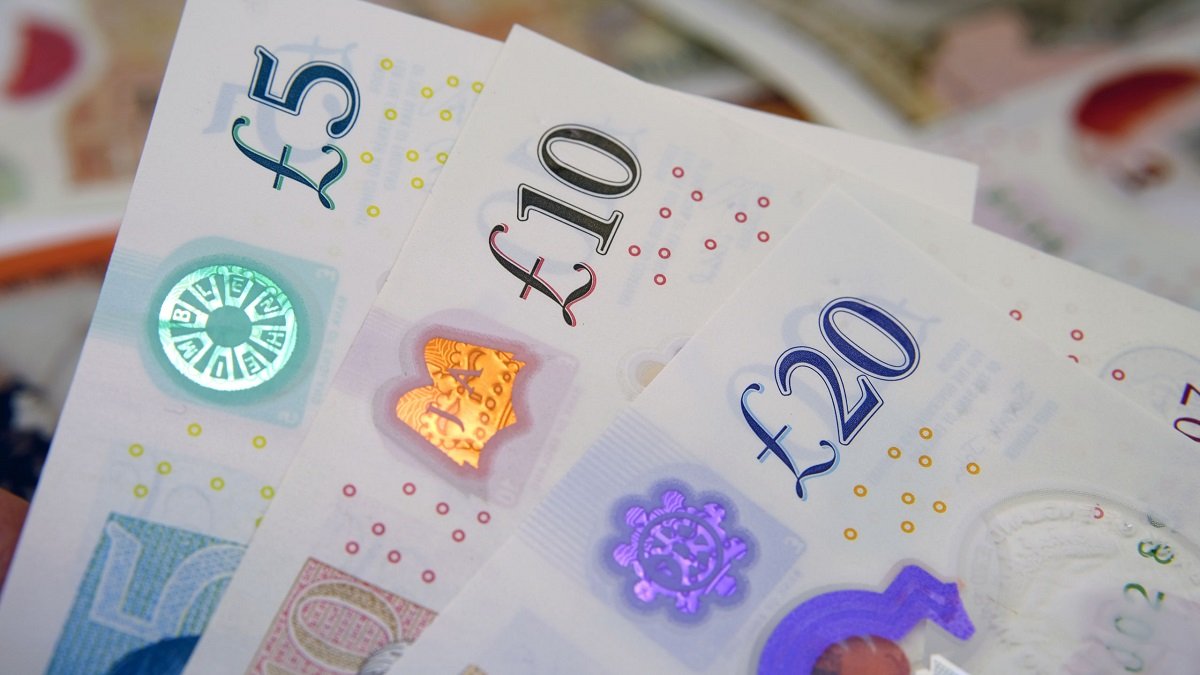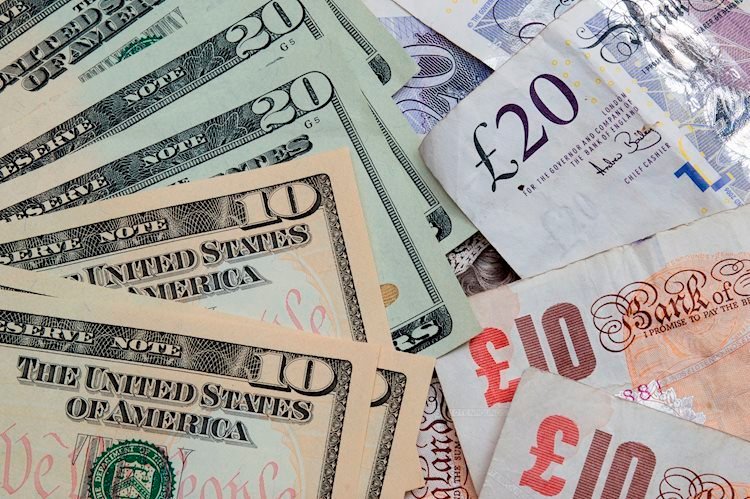- The Pound Sterling holds onto gains near 1.3530 against the US Dollar as Fed’s Powell argues in favor of interest rate cuts.
- Fed’s Powell warns of downside labor market risks at Jackson Hole Symposium.
- BoE’s Bailey states acute challenges in the UK economy due to reduced labor force participation.
The Pound Sterling (GBP) clings to Friday’s gains near 1.3530 against the US Dollar (USD) during the European trading session on Monday. The GBP/USD pair trades firmly as comments from Federal Reserve (Fed) Chair Jerome Powell, in his speech at the Jackson Hole Symposium on Friday, have signaled that he has turned dovish on the interest rate outlook.
Investors had anticipated that Powell would reiterate a “wait and see” approach on interest rates. However, a surprise dovish tone has increased the risk appetite of investors significantly.
However, the US Dollar and US Treasury yields have come under pressure. At the time of writing, the US Dollar Index (DXY), which tracks the Greenback’s value against six major currencies, struggles to gain ground near an almost four-week low around 97.60. At the same time, 10-year US Treasury Yields trade near Friday’s low around 4.27%.
Meanwhile, investors brace for a less volatile trading day for the Pound Sterling as the United Kingdom (UK) markets are closed on Monday on account of the Summer Bank Holiday.
Daily digest market movers: Pound Sterling gains on risk-on mood
- The Pound Sterling demonstrates strength against the US Dollar as Fed’s Powell has signaled that he is open to unwinding monetary policy restrictiveness.
- On Friday, Fed Chair Powell said, “Nonetheless, with policy in restrictive territory, the baseline outlook and the shifting balance of risks may warrant adjusting our policy stance.”
- Powell warned of growing labor market concerns, which are paving the way for monetary policy adjustments. “Downside risks to employment are rising, and if those risks materialize, they can do so quickly,” Powell said.
- A dovish commentary from Fed’s Powell was surprising for financial market participants as they were anticipating that he would reiterate the need to hold interest rates at their current levels until officials get clarity on whether the impact of tariffs on inflation would be one-time or persistent. However, Powell clarified that unfolding tariff risks on inflation don’t appear to be long-term.
- “Possible that tariff-driven upward pressure on prices could spur lasting inflation dynamic, but unlikely, given downside risks to the labor market,” Powell said.
- For fresh cues on inflation, investors will focus on the US Personal Consumption Expenditure Price Index (PCE) data for July, which is scheduled to be released on Friday. Currently, traders are confident that the Fed will cut interest rates in the September policy meeting, according to the CME FedWatch tool.
- On Friday, Bank of England (BoE) Governor Andrew Bailey also participated in the Jackson Hole Symposium and stated “acute challenges” faced by the UK economy. Bailey said that the economy is under pressure due to weak underlying growth amid reduced labor force participation since the Covid-19 pandemic. He warned that labor issues will stay for longer as “ageing is not going to turn around in the foreseeable future”, Reuters reported.
Technical Analysis: Pound Sterling forms an inverse Head and Shoulder chart pattern

The Pound Sterling trades firmly above 1.3500 against the US Dollar at the start of the week. The near-term trend of the GBP/USD pair has turned bullish as it has returned above the 20-day Exponential Moving Average (EMA), which trades around 1.3466.
The Cable is also forming an inverse Head and Shoulder (H&S) chart pattern, which leads to a bullish reversal after a corrective or downside move. The neckline of the H&S pattern is placed around 1.3580.
The 14-day Relative Strength Index (RSI) oscillates inside the 40.00-60.00 range, suggesting a sharp volatility contraction.
Looking down, the August 11 low of 1.3400 will act as a key support zone. On the upside, the July 1 high near 1.3790 will act as a key barrier.
Pound Sterling FAQs
The Pound Sterling (GBP) is the oldest currency in the world (886 AD) and the official currency of the United Kingdom. It is the fourth most traded unit for foreign exchange (FX) in the world, accounting for 12% of all transactions, averaging $630 billion a day, according to 2022 data.
Its key trading pairs are GBP/USD, also known as ‘Cable’, which accounts for 11% of FX, GBP/JPY, or the ‘Dragon’ as it is known by traders (3%), and EUR/GBP (2%). The Pound Sterling is issued by the Bank of England (BoE).
The single most important factor influencing the value of the Pound Sterling is monetary policy decided by the Bank of England. The BoE bases its decisions on whether it has achieved its primary goal of “price stability” – a steady inflation rate of around 2%. Its primary tool for achieving this is the adjustment of interest rates.
When inflation is too high, the BoE will try to rein it in by raising interest rates, making it more expensive for people and businesses to access credit. This is generally positive for GBP, as higher interest rates make the UK a more attractive place for global investors to park their money.
When inflation falls too low it is a sign economic growth is slowing. In this scenario, the BoE will consider lowering interest rates to cheapen credit so businesses will borrow more to invest in growth-generating projects.
Data releases gauge the health of the economy and can impact the value of the Pound Sterling. Indicators such as GDP, Manufacturing and Services PMIs, and employment can all influence the direction of the GBP.
A strong economy is good for Sterling. Not only does it attract more foreign investment but it may encourage the BoE to put up interest rates, which will directly strengthen GBP. Otherwise, if economic data is weak, the Pound Sterling is likely to fall.
Another significant data release for the Pound Sterling is the Trade Balance. This indicator measures the difference between what a country earns from its exports and what it spends on imports over a given period.
If a country produces highly sought-after exports, its currency will benefit purely from the extra demand created from foreign buyers seeking to purchase these goods. Therefore, a positive net Trade Balance strengthens a currency and vice versa for a negative balance.







